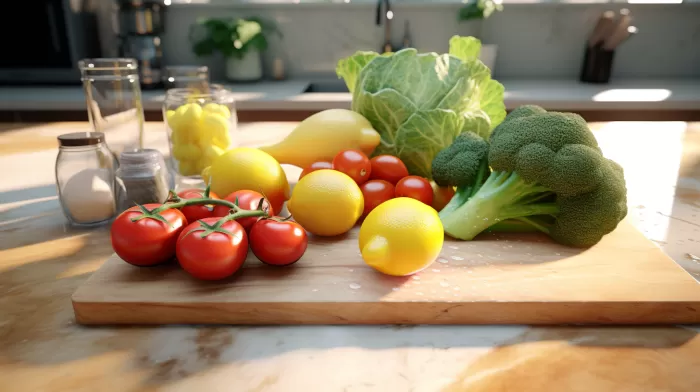You might be shocked to learn that your fresh fruits and vegetables, which you’ve carefully selected as part of a healthy diet, could be laden with pesticides, fecal matter, and debris from countless hands that have touched them before you. Fear not, however, because there’s a simple, natural way to clean your produce without resorting to store-bought washes that replace pesticides with other harsh chemicals. Follow this easy method to ensure your fruits and veggies are safe and ready for consumption.
The 3-Step Natural Produce Cleaning Method
- Create a cleansing solution: Start by filling a clean bowl or sink with a mixture of one part white vinegar to three parts room temperature, purified water. Vinegar’s acidity is excellent for killing bacteria, while purified water ensures no additional contaminants are added during the process.
-
Soak your produce: Place your room temperature fruits and vegetables into the cleansing solution, fully submerged, and let them soak for 10 minutes. This time allows the vinegar to work its magic and remove dirt, bacteria, and pesticide residue.
-
Air dry: After the soaking time has elapsed, remove your produce from the solution and let it air dry on a clean towel or countertop. Air drying can help prevent additional contamination from dirty towels or surfaces, ensuring your fruits and vegetables stay clean.
Additional Tips for Buying and Storing Produce
To keep your produce at its best quality and reduce the risk of contamination, here are some more tips to remember when buying, storing, and enjoying your fresh fruits and vegetables:
- Inspect for damage: Choose produce that is free of damage or bruises. These imperfections can harbor bacteria and make your food more susceptible to spoilage.
-
Keep produce separate: Bag fresh fruits and vegetables separately from meat, poultry, and seafood to prevent cross-contamination. This is especially important when using reusable bags, which can harbor bacteria if not regularly washed.
-
Store at the right temperature: Keep your refrigerator temperature set at 40 degrees Fahrenheit (4 degrees Celsius) or below. This helps slow down bacterial growth and keeps your produce fresh for a longer time.
-
Wash before eating, not storing: Washing produce before storing may promote bacterial growth and spoil your fruits and veggies faster. Instead, wait and wash your produce just before you’re ready to eat or cook with them.
-
Rotate your stock: When you bring home new produce, move the older items to the front of your fridge or pantry to ensure they get used up first. This prevents waste and helps maintain the quality of all your fruits and vegetables.
-
Eat seasonally: Fruits and vegetables are at their peak quality, flavor, and nutritional value when they’re in season. Choose produce that is grown locally and in-season for the best taste and health benefits.
-
Consider organic: If you want to avoid synthetic pesticides completely, consider buying organic produce or growing your own. Organic farming methods use fewer harmful chemicals and can result in healthier, more nutritious fruits and vegetables.
Cleaning your fruits and vegetables is an important step in food safety. By following this natural, 3-step cleaning method, along with these additional tips, you’ll be able to enjoy your produce with peace of mind, knowing they’re free of harmful contaminants. Your body will thank you for providing it with the clean, nutrient-rich food it needs to thrive.



